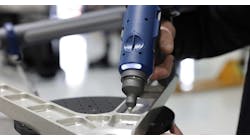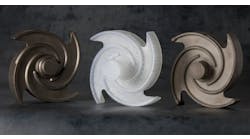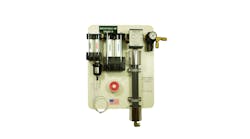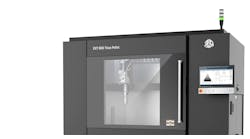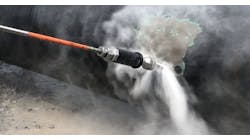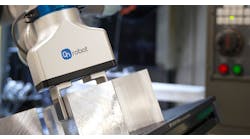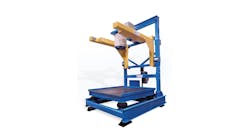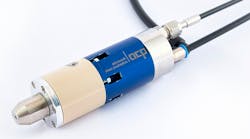ACP SYSTEMS AG is extending the range of applications for its quattroClean snow jet cleaning technology with a new, pulsed two-substance ring nozzle, which also cuts carbon-dioxide and compressed-air consumption by up to 15%.
Industrial parts cleaning has trended towards dry processes that are capable of removing particulate and filmic contamination reliably and, if necessary, selectively. There is also a growing demand for integrating such processes into production lines in a simple and space-saving way. The acp systems AG quattroClean snow jet technology uses liquid, climate-neutral carbon dioxide as a cleaning medium.
The wear-free nozzle is equipped with a valve specially developed by acp for this purpose which enables pulse times as fast as 20 milliseconds.
In contrast with pilot-operated standard valves, the direct control of the valve prevents icing and thus ensures reliable operation and consistently superior results. The jet and pause times can be set independently of each other, so that the pulses can be optimally adapted to the respective application and also to the part-specific cleaning sequence. At the same time, the pulsed jet reduces CO2 and compressed air consumption. Depending on the pulse time, savings between 10 and 15% can be achieved.
The pulsed jet of CO2 and compressed air has a higher kinetic energy than a continuous jet, making it slightly abrasive. This opens up potential applications where conventional CO2 snow jet cleaning previously had to pass. For example, the pulsed jet of CO2 and compressed air has sufficient cleaning power to remove fine burrs from aluminum and zinc diecastings. Furthermore, the technology can be used to simultaneously deburr and clean hard and brittle plastics such as PEEK and PPS. When machining these plastic and aluminum parts, the new two-substance ring nozzle also offers optimization potential. If used as an alternative to conventional cooling lubricants, the cold snow crystals made of carbon dioxide ensure a higher metal removal rate, thus improving productivity and reducing tool wear. Also, the workpieces and machine stay cleaner.
The wear-free, two-substance ring nozzle is the “heart” of the process. Liquid carbon dioxide is fed through it and expands on exiting to form fine snow crystals. Then, these are bundled by a separate jacket jet of compressed air and accelerated to supersonic speed. When the easy-to-focus jet impacts on the surface to be cleaned or deburred, a combination of thermal, mechanical, solvent and sublimation effects takes place. The interaction of these four mechanisms of action reliably removes particulate and filmic contamination as well as fine burrs. The detached contaminants or burrs are carried away from the part by the aerodynamic force of the jet of compressed air and removed from the process chamber by an integrated extraction system.
Since CO2 sublimates at atmospheric pressure, the parts are immediately dry and can be further processed straightaway. When the quattroClean snow jet technology is used in machining applications, the chips generated are both clean and dry, making them easy to recycle. The scalable quattroClean process can be adapted to different component geometries for partial or full-surface cleaning in a space-saving and efficient manner. Process parameters are determined via trials in the company's own technical center. Based on standard modules, the cleaning systems are designed to match the cleaning task and cycle time specified by the customer. The company builds stand-alone systems as well as solutions for integration into automated and/or interlinked production lines.
Learn more at www.acp-systems.com
